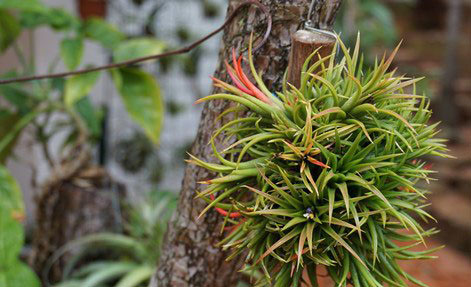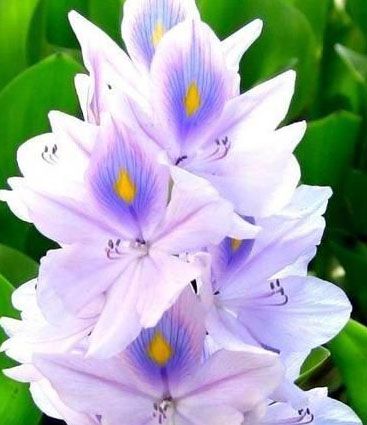Brown spot of gardenia flower
Symptoms and pathological changes: in the early stage, the leaves had light yellow round disease spots, orange halo circles, gradually expanded into round, irregular brown spots, hidden wheel lines, so that the leaves withered. The disease is a fungal disease, which is caused by the infection of Chaetomium pericardium. The pathogen mainly lurks in the diseased leaves in the winter, when the temperature and humidity are suitable in spring. The characteristic of this pathogen is that a large number of sexual behaviors can also be formed in the growing season. The condition of high temperature and high humidity is beneficial to the disease. On the way of transporting gardenia seedlings, the ventilation is poor, the environment is hot and humid, and the incidence rate is high.
The control methods of gardenia brown spot are as follows: 1. Remove the diseased leaves and destroy them at any time to reduce the source of infection. 2. Carry out chemical control. Before the onset of the disease, 1% Bordeaux solution is sprayed to protect plants from infection; during the onset of the disease, 75% chlorothalonil wettable powder 500 times 800 times liquid can be sprayed for prevention and control. Or with alum fertilizer water (2.5 kg of ferrous sulfate, 5 kg of bean cake, 15 kg of pig manure mixed retting, after 10-15 days of fermentation and ripening) and clear water interval irrigation. The foliage can also be sprayed with 0.1%-0.2% ferrous sulfate solution.

Prevention of brown spot of gardenia flower
Symptoms and pathological changes: in the early stage, the leaves had light yellow round disease spots, orange halo circles, gradually expanded into round, irregular brown spots, hidden wheel lines, so that the leaves withered. The disease is a fungal disease and is caused by the infection of Chlamydomonas aeruginosa.
The pathogen mainly lurked in the diseased leaves in the winter, when the temperature and humidity were suitable in the spring of the second year. The characteristic of this pathogen is that a large number of sexual behaviors can also be formed in the growing season. The condition of high temperature and high humidity is conducive to the onset of disease. On the way of transporting gardenia seedlings, the ventilation is poor, the environment is hot and humid, and the incidence rate is high.
Prevention and control of brown spot of gardenia flower:
1. Remove the diseased leaves and destroy them at any time to reduce the source of infection.
2. Carry out chemical control. Before the onset of the disease, 1% Bordeaux solution is sprayed to protect plants from infection; during the onset of the disease, 75% chlorothalonil wettable powder 500 times 800 times liquid can be sprayed for prevention and control. Or with alum fertilizer water (mixed retting with ferrous sulfate 2.5kg, bean cake 5kg, pig manure 15kg, after 10-15 days of fermentation and ripening) and clear water interval irrigation. The foliage can also be sprayed with 0.1%-0.2% ferrous sulfate solution.
Gardenia brown spot should be prevented in time. One of the causes of gardenia brown spot is poor ventilation. It is suggested that we must maintain the ventilation of gardenia in breeding. Especially in the case of high temperature, we must pay special attention to this point!
What are the common diseases and insect pests of Gardenia jasminoides
Plants will inevitably encounter a variety of diseases and pests in the process of growth, and gardenia is no exception, but the diseases and pests of each plant may be different. This paper briefly introduces the control methods of diseases and insect pests of Gardenia jasminoides, which can be used as a reference for gardenia planting friends.
The main diseases of Gardenia jasminoides are brown spot, anthrax, coal fouling, root rot, yellowing and so on. Indoor, the disease may occur all year round, and when the plant is serious, the leaves fall, fruit drop or die. The common pests are red spiders and scale insects. When the disease occurs, the leaves of the plant will be riddled with holes, which will not only affect the plant growth, but also reduce the ornamental degree of gardenia.
Control of common diseases of Gardenia jasminoides
1. Treatment of chlorosis
Chlorosis is caused by many reasons, so different measures should be taken to prevent and cure chlorosis.
Lack of fertilizer: this yellowing disease starts from the old leaves in the lower part of the plant and gradually spreads to the new leaves. Nitrogen deficiency: simple yellow leaves, new leaves small and brittle.
Potassium deficiency: old leaves change from green to brown. Phosphorus deficiency: old leaves are purplish red or dark red. For the above cases, rotten human feces and urine or cake fertilizer can be forced to apply.
Iron deficiency: this yellowing disease is shown on new leaves. At first, the leaves are yellowish or white, the veins are still green, and in severe cases, the veins are yellow or white, and eventually the leaves will dry up and die. To this kind of situation, can spray 0.2% Mel 0.5% ferrous sulfate solution to prevent and cure.
Magnesium deficiency: this yellowing disease gradually develops from the old leaves to the new leaves, the veins are still green, and when the leaves are serious, the leaves fall off and die. For this situation, 0.7% Mel 0.8% boron and magnesium fertilizer can be sprayed to prevent and control. Excessive watering, freezing and so on will also cause the phenomenon of yellow leaves, so special attention should be paid to it in the process of maintenance.
2. Anthrax
It will occur in Cixi from April to October, damage to leaves, brown spot will occur in Cixi from March to November, damage to the middle and lower leaves of the plant, chlorosis, damage to the middle and upper leaves.
Control methods: strengthen cultivation management, do a good job in garden cleaning, reduce the sources of diseases and insect pests, remove diseased branches and leaves in time, eradicate weeds in the garden, concentrate on burning or deep burial treatment, in order to reduce infection sources, timely pruning, change tree ventilation and light transmittance, enhance tree potential, pay attention to drainage in rainy season, and reduce groundwater level and field air humidity.
Common pests of Gardenia jasminoides
1. Red spider
The red spider mainly harms the leaves of Gardenia jasminoides. Red spiders are parasitic on gardenia, live mainly by sucking leaf sap, and grow and gather on the back of leaves. The leaves of the plants infested by red spiders are yellow and their growth is weak. In addition, red spiders reproduce faster in high, dry and warm environments.
Prevention and control methods: first, to maintain the appropriate humidity of the environment, not to create breeding conditions for red spiders. When the air is dry, it is often sprayed to lower the temperature and increase humidity. Second, when you find a red spider, rinse it with clean water immediately and wipe it out. Third, the family can use yellow tobacco leaves or smoke the rest of the cigarette end bubble spray, the contact effect is obvious.
2. Scale insects
Damage performance: scale insects are pests that harm the branches and leaves of Gardenia jasminoides. Although the size is small, the lethality should not be underestimated. Scale insects feed on the sap of the plant, the leaves of the light ones are yellow, the plant growth is weak, and the heavy ones die, which has a great influence on the growth and development of Gardenia jasminoides.
Control methods: scale insects are small, often gather together and secrete wax, which looks like a pile of white wax powder. Just pick it off with a stick and crush it to death. Or spray 1000 times of dichlorvos solution to kill. When the flowers bloom in spring every year, spray 0.2-0.5 degrees stone sulfur mixture to kill insect eggs. This method plays an important role in the prevention of insect pests.
This paper only introduces several common prevention and control methods of gardenia diseases and insect pests. If you encounter other diseases and insect pests in the process of planting gardenia, you might as well consult the relevant technicians.
- Prev

Air pineapple planting (family version)
Air pineapple is magical. It can survive by hanging in the air without any soil. It is not only good-looking, but also very fun. For air pineapple planting, many people say that empty Phoenix is not easy to raise, and many people say that air pineapple is very easy to raise. Air pineapple is divided into many kinds, and the planting methods are also slightly different.
- Next

Leaf spot of eight Immortals
Symptoms and pathological changes: Baxian mosaic spot is mainly distributed in Sichuan, Henan, Guangdong, Taiwan, Jilin, Shanghai, Zhejiang, Hunan and other places. The disease mainly occurs on the leaves, the leaf spot is a light yellowish brown watery spot at first, and then expands into a circle, nearly round, 2mm in diameter.
Related
- Fuxing push coffee new agricultural production and marketing class: lack of small-scale processing plants
- Jujube rice field leisure farm deep ploughing Yilan for five years to create a space for organic food and play
- Nongyu Farm-A trial of organic papaya for brave women with advanced technology
- Four points for attention in the prevention and control of diseases and insect pests of edible fungi
- How to add nutrient solution to Edible Fungi
- Is there any good way to control edible fungus mites?
- Open Inoculation Technology of Edible Fungi
- Is there any clever way to use fertilizer for edible fungus in winter?
- What agents are used to kill the pathogens of edible fungi in the mushroom shed?
- Rapid drying of Edible Fungi

